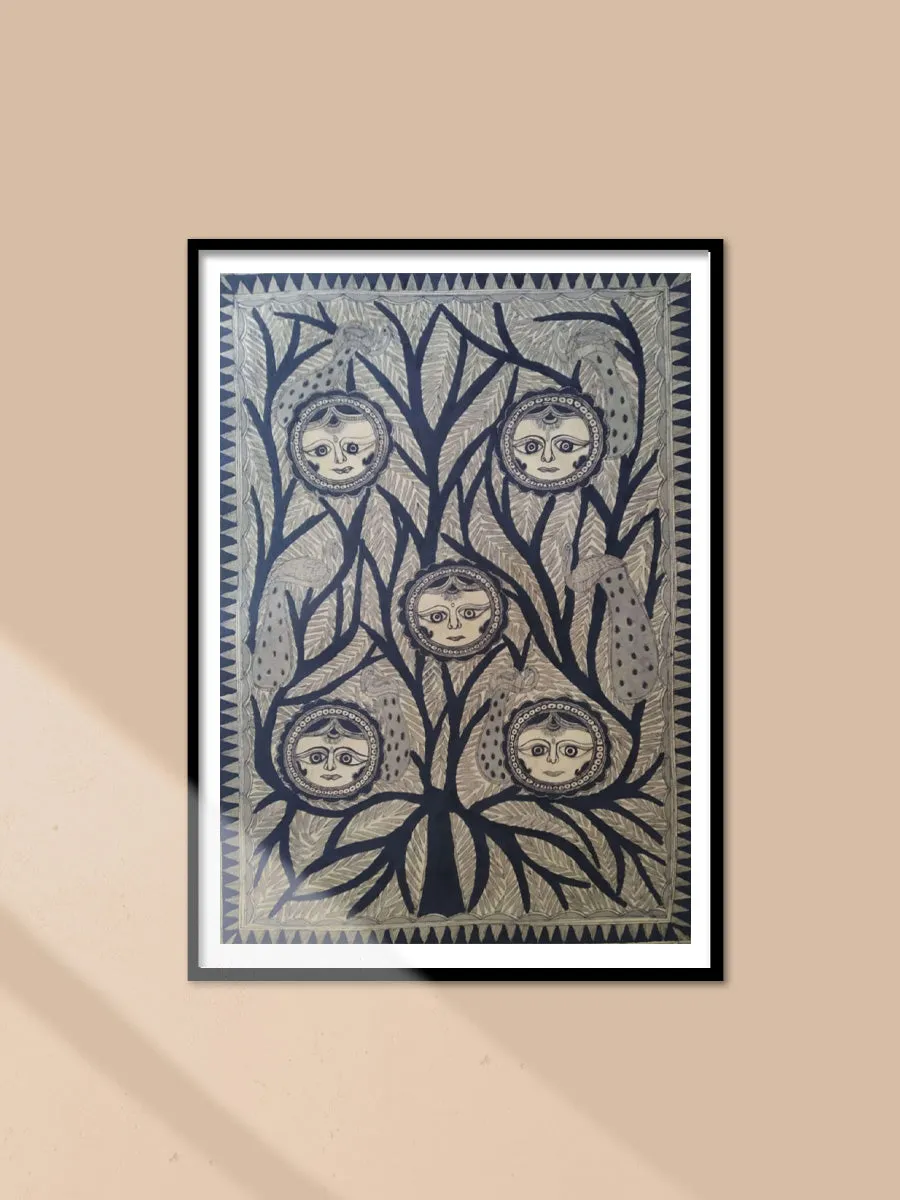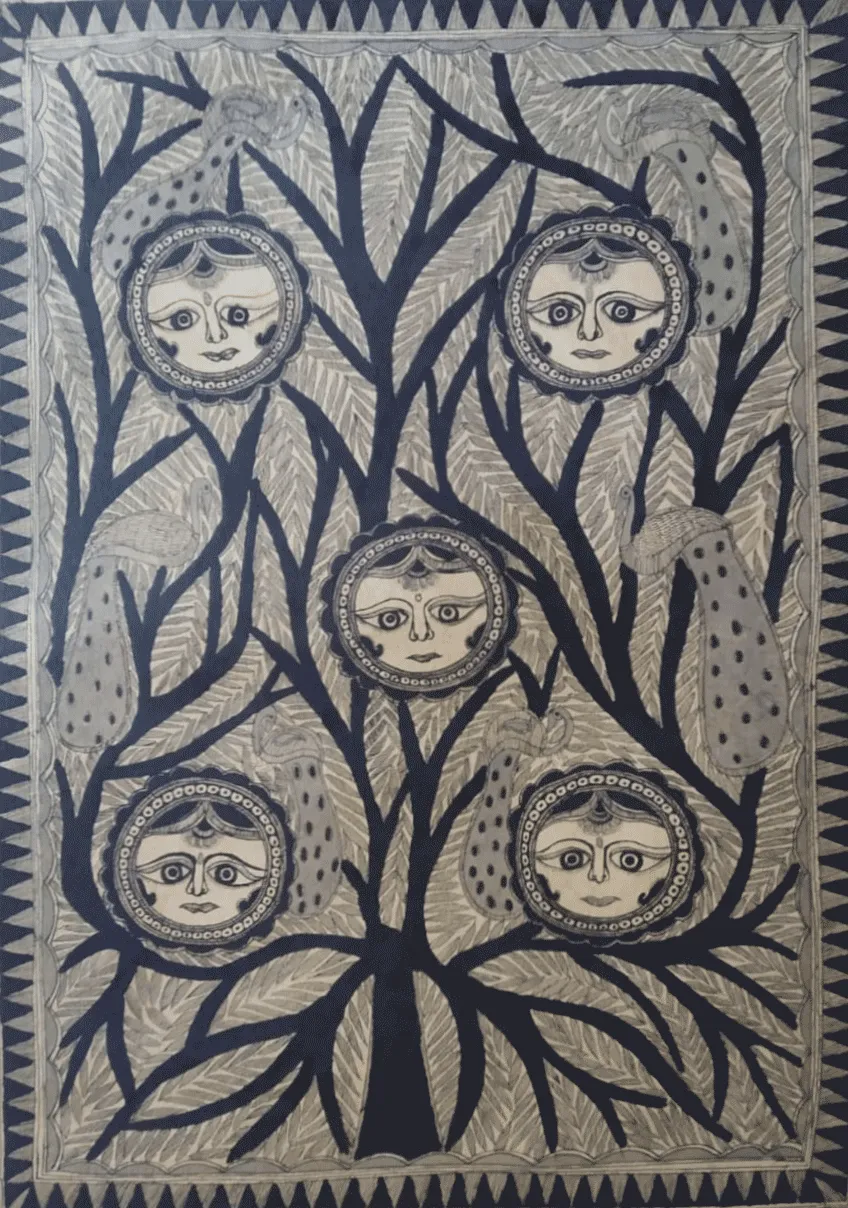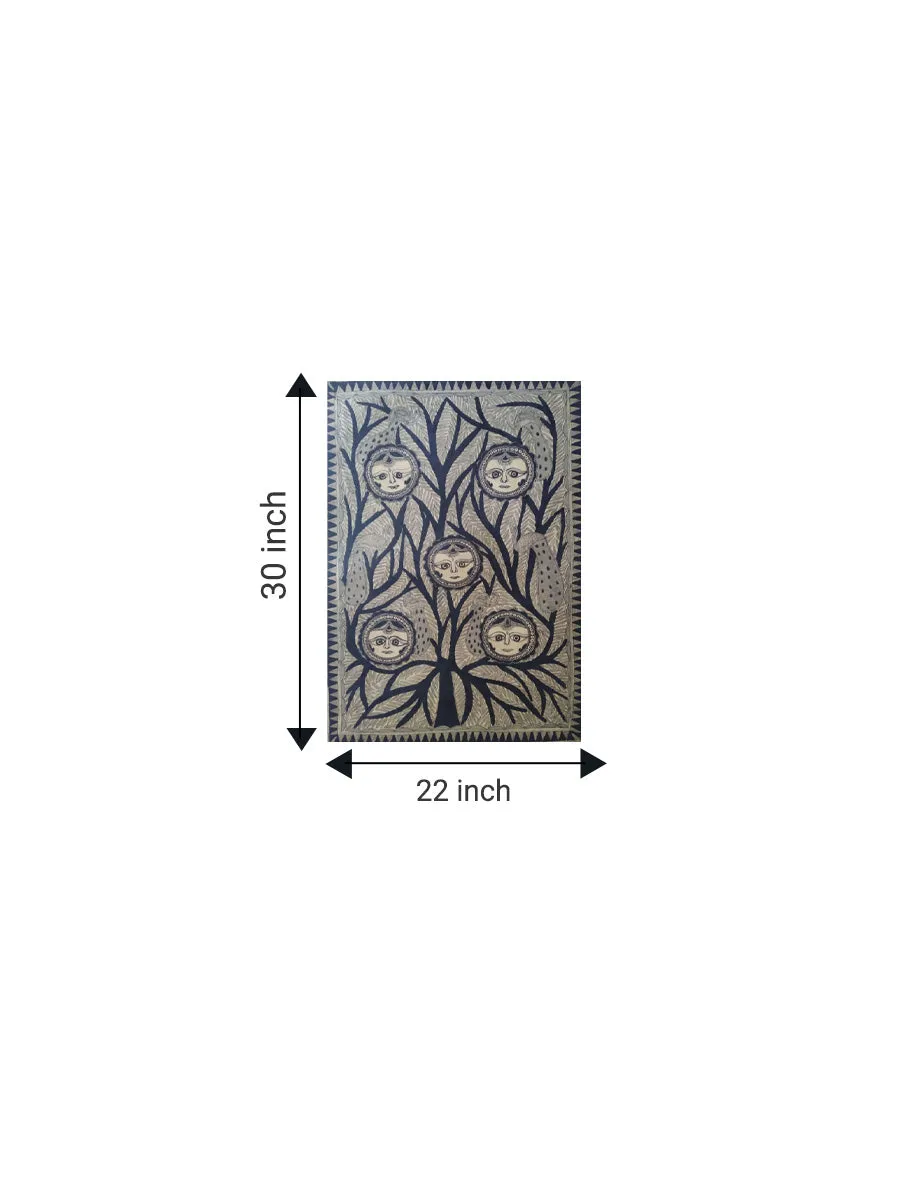The Madhubani painting by Bindeshwar paswan showcasing Bandevi is a true masterpiece filled with symbolism and cultural significance.
The central element of the painting, Bandevi, is a representation of a divine female figure, often associated with fertility, protection, and abundance in Indian mythology. Her presence in the painting symbolizes strength, grace, and the nurturing aspects of feminine energy. The tree depicted in the painting holds deep symbolism in Madhubani art, representing the interconnectedness of life, growth, and nature. The intricate patterns and monochrome colors adorning the tree's branches and leaves showcase the artist's attention to detail and mastery of the art form. The presence of peacocks perched on the branches of the tree is a common motif in Madhubani art, symbolizing beauty, grace, and spirituality. Peacocks are often associated with auspiciousness and are considered sacred in Indian culture, adding a sense of harmony and divine presence to the painting.
Overall, the combination of Bandevi, the tree, and the peacocks in this Madhubani painting by Bindeshwar paswan creates a rich tapestry of symbolism, tradition, and artistry. Each element carries its own meaning and significance, coming together to form a visually stunning and culturally significant artwork that resonates with viewers on multiple levels.


















